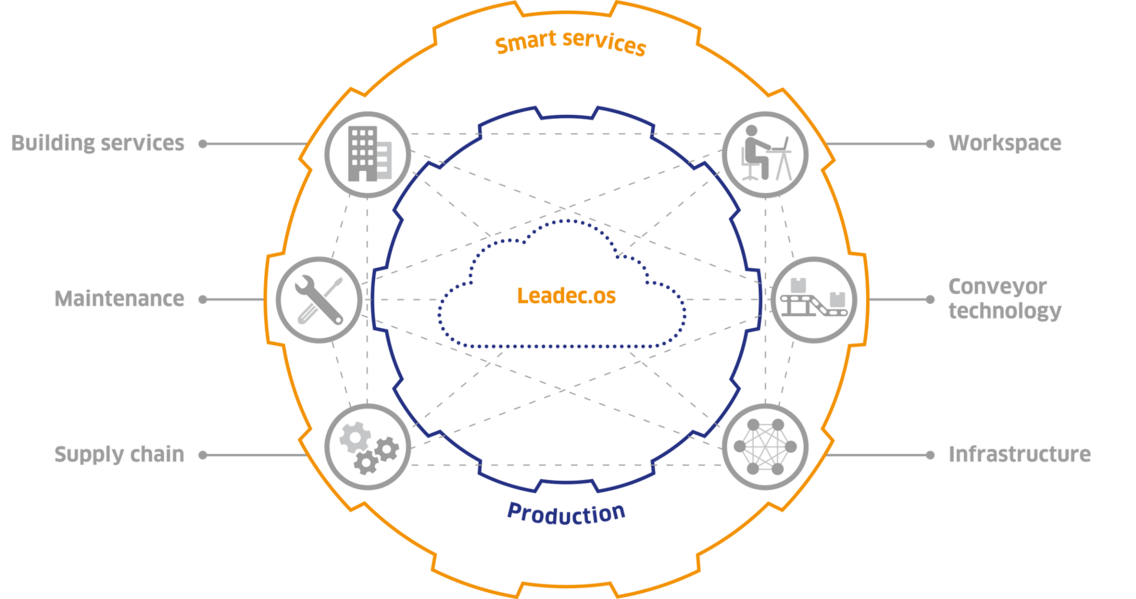When Production and Services Go Hand in Hand
The factory of the future is characterized by automated manufacturing, data-driven processes and networked systems. In short: Factories are getting smarter and smarter. But how smart are the accompanying services?
Manufacturers are under pressure. They have to react to change faster and faster, become more digital, more modular and more flexible, while product development cycles are getting shorter and shorter. In the automotive industry, for example, an average of seven years was needed to develop a new vehicle just a short time ago. Now it takes just five, if not only three, years. At the same time, the demand for individual vehicles is growing – what works for customized sneakers must also be possible for a car, customers think. To meet all these demands, OEMs are using new manufacturing processes such as lightweight construction and 3D printing, automating their production and increasingly working with data.
A spanner in the works
But what is the point of the most modern processes if a screw in the path stops the automated guided vehicle (AGV)? Or if there is no overview of the internal movement of goods and no one really knows where a forklift truck or required material is at the moment? Or if cleaning filters are replaced at fixed intervals, regardless of whether the filter needs to be replaced? Many more examples could be given, but they all have the same consequence: Optimization potential is lost directly on the shop floor when production-related services are not leveraged at the same pace as smart manufacturing.
Smart production requires smart maintenance
As a service provider in the factory, Leadec is increasingly focused on making the production-related processes intelligent and thus cost-efficient. To achieve this, production and services must go hand in hand. Because data from production is the basis for associated services. If this data is made accessible in a comprehensive manner, a true ecosystem – i.e. the collaboration of different players in the production area – can be created. For example, sensors can be used to measure the vibration and temperature of bearings on machines. If this information is made available to the service partner, a service provider such as Leadec can predict a failure at an early stage and carry out preventive maintenance activities, resulting in shorter downtime and longer equipment lifetime. And this ultimately reduces costs.
Seeing the factory as a system
For many years, services were considered as secondary – more as a support than a decisive factor for production success. But both areas are growing together and the same way that production is connected, the peripheral services must also be connected. In order to achieve this, manufacturers and service partners ideally cooperate right from the start of factory planning. The factory is then networked and digitized not only in part, but in its entirety. Above all, service and maintenance along the life cycle are taken into account from the beginning – thus minimizing operating costs. The factory becomes a system. Future-proof production layouts must be designed with flexibility in mind, which is one of the key future issues for the manufacturing industry. Smart factories offer almost infinite design potential and facilitate the integration of platforms for data collection and use. This data in turn is the basis for integrating technical services as an important part of factory operations. This increases output, while at the same time factory operations are monitored and performance is optimized.
What does Leadec offer?
Leadec sees itself as a mediator in this ecosystem and as part of a strong partner network. We bundle our activities under the heading “Factory of the Future” and are continuously working on new service models under the keyword “everything as a service.” We offer our customers integrated services along the entire life cycle: from planning and installation to the commissioning of modular manufacturing systems to their maintenance and the design of the periphery, including logistics.


















